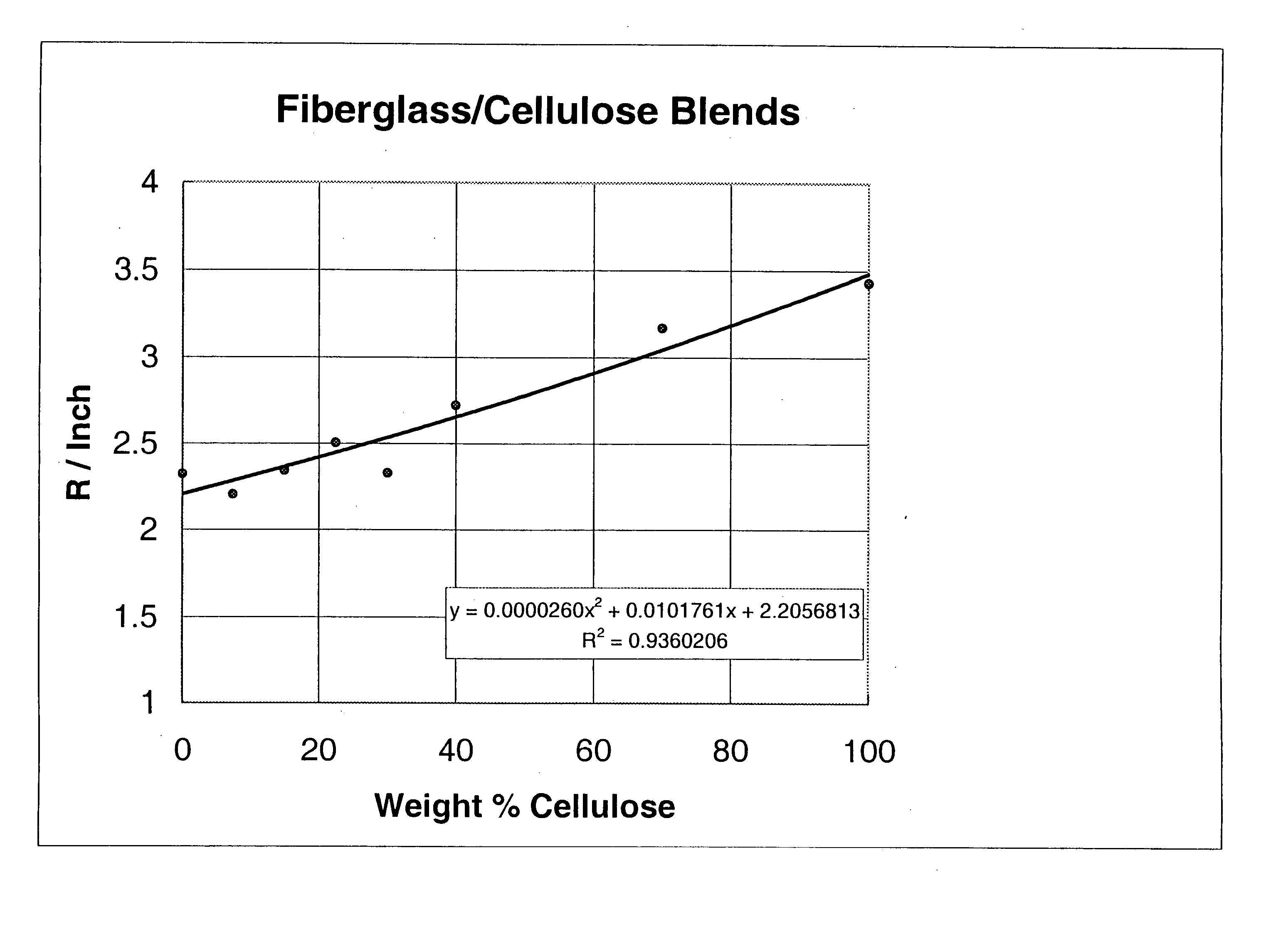Insulation with mixture of fiberglass and cellulose
a technology of cellulose and fiberglass, applied in the field of insulation with mixture of fiberglass and cellulose, can solve the problems of radiant barrier characteristics that have drawbacks, and achieve the effect of improving radiant barrier and/or r-value properties
- Summary
- Abstract
- Description
- Claims
- Application Information
AI Technical Summary
Benefits of technology
Problems solved by technology
Method used
Image
Examples
examples
[0019] The Examples set forth below (results shown in FIG. 1) illustrate the surprising benefits associated with certain mixtures of fiberglass and cellulose according to certain embodiments of the instant invention. These examples are provided for purposes of example only, and are not intended to be limiting. For each of the samples set forth below, a plurality of different examples was made and the resulting average properties are listed. For example, a plurality of samples with 22.5% cellulose (remainder fiberglass) were made and the average of all such samples with this amount of cellulose was an R-value / inch of 2.50 and a density of 0.61 lb. / ft3. For the below loose-fill examples, the fiberglass used was white uncured loose-fill fiberglass from Guardian Fiberglass, Inc., Albion, Mich., and the cellulose was residential loose-fill cellulose from P-K Cellulose, Joplin, Mo. and / or Cocoon cellulose from the U.S. Greenfiber, Charlotte, N.C. As mentioned above, the insulation in the ...
PUM
| Property | Measurement | Unit |
|---|---|---|
| density | aaaaa | aaaaa |
| density | aaaaa | aaaaa |
| density | aaaaa | aaaaa |
Abstract
Description
Claims
Application Information
 Login to View More
Login to View More - R&D
- Intellectual Property
- Life Sciences
- Materials
- Tech Scout
- Unparalleled Data Quality
- Higher Quality Content
- 60% Fewer Hallucinations
Browse by: Latest US Patents, China's latest patents, Technical Efficacy Thesaurus, Application Domain, Technology Topic, Popular Technical Reports.
© 2025 PatSnap. All rights reserved.Legal|Privacy policy|Modern Slavery Act Transparency Statement|Sitemap|About US| Contact US: help@patsnap.com


